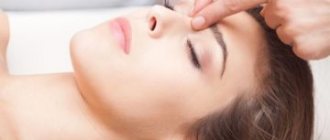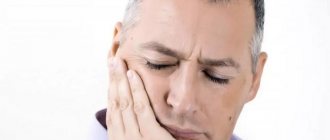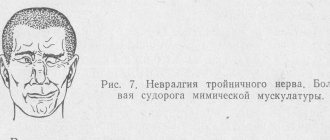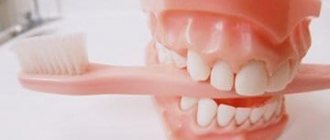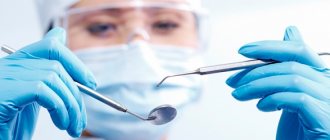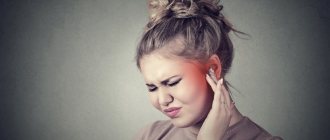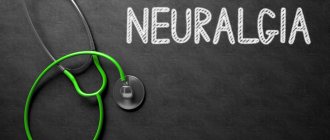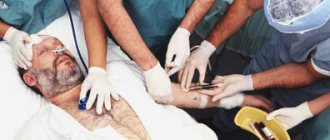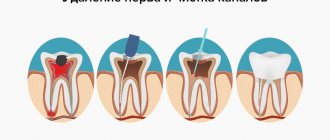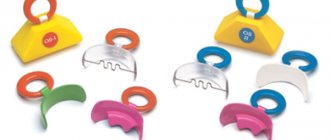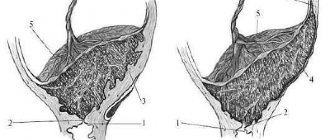Therapeutic physical training and massage for neuritis of the facial nerve (Bell's palsy) are important components of an integrated approach to eliminating facial problems.
Unpleasant symptoms of damage to the facial nerves occur as a result of many diseases (otitis media, cerebral circulatory disorders, brain tumors, skull fractures, hypothermia, infections). The disorders are expressed by paralysis of the facial and masticatory muscles. Most often they appear on one side, less often on both sides.
A special set of physical exercises for the face, massage, and treatment with a special position must be performed from the 1st day of the onset of the disease. Therapeutic exercise and massage improve blood flow in the damaged part of the face, gradually restore the functionality of facial expressions, and contribute to the return of clear speech.
Sets of exercises for the basic period of treatment
The base period is the time of onset of the disease: from 1 to 10 days. At this time, the patient is put on a special corset for the face (position therapy) and begins therapeutic exercises. The exercises used during this period are preparatory and basic. Therefore, overload should not be allowed: training is carried out 2 times a day for 10 minutes each.
Note!
The main task of the base period is to strengthen the muscle tone of the healthy part of the face.
Before you start training, massage your face for 2-3 minutes, gently rubbing the skin:
- Using circular movements on the closed skin of the eyelids;
- Along the wings of the nose with stroking movements up and down;
- Along the line of the eyebrows from their middle to the temples.
Self-massage of the face is also carried out after the basic complex is completed.
Let us give examples of therapeutic exercises for neuritis of the facial nerve in the base period.
- Tighten and relax the muscle tissue of the healthy part of the face;
- Tighten the muscle tissue that is involved in the facial expressions of a certain group;
- Speak sounds that involve the lips (p, b, v, m, o, u, f).
Performing these exercises in class prepares the facial muscles for basic training.
How to deal with inflammation at home?
From the first days after detection of neuritis of the facial muscles, it is necessary to begin treatment to stop the progression of the disease. The doctor will prescribe medication and physical therapy. In some cases, acupuncture and biofeedback are additionally used. Following some rules at home also promotes recovery:
READ ALSO: main symptoms and treatment of facial neuritis
- chew food alternately on both sides - this helps restore motor activity,
- sleep on the affected side - to improve blood circulation,
- restore facial asymmetry using an elastic bandage.
The last point deserves special attention. Procedures are carried out 3 times a day, lasting 40-50 minutes. The greatest effectiveness is achieved if the patient tenses his facial muscles during treatment, for example, when talking or eating.
Folk remedies are used to treat neuritis:
- If the cause of the disease is hypothermia, warming up helps. To do this, cereal or table salt heated in a frying pan is poured into a fabric bag and applied to the paralyzed areas. You can use a sock instead of a bag. The heating pad should be warm, but not hot. Warming continues until its contents cool down. The procedure is carried out daily, twice a day, for three weeks.
- When an illness develops due to nervousness, it is necessary to calm the nervous system. To do this, prepare the following remedy: mix 3 tablespoons of tincture of calendula, hawthorn, motherwort and peony, add 3 tablespoons of honey and 2 tablespoons of Corvalol. The medicine should be stored in the refrigerator. Take 1 teaspoon before bedtime for three months.
In addition to folk remedies, there are effective methods for treating inflammation of the facial nerves, which can also be used at home (we recommend reading: what are the main symptoms of inflammation of the facial nerve?). These types of treatments do not exclude the need to consult a doctor, but are an addition to the fastest and most effective cure. Let's take a closer look at proven methods.
Acupressure facial massage
Acupressure, or acupressure, is the effect of massaging movements on biologically active points. For neuritis of the facial nerve, massage of the following points helps:
READ ALSO: Facial neuritis: causes, symptoms and treatment
- eyebrows,
- located above the eyes
- temporal,
- located under the cheekbones,
- at the wings of the nose,
- in front of the ears
- between lip and chin,
- point on the back of the neck.
READ ALSO: what to do if the cheekbone on your face hurts and what are the reasons?
Massage the points for 10-15 seconds. Regardless of whether one or two sides are affected by the disease, massage both sides of the face. Strong pressure is excluded, the procedure should not cause pain.
INTERESTING: Which points should be massaged to relieve toothache? It is more convenient to do a massage while sitting in front of a mirror. If the patient does not perform the procedure independently, it is recommended to lay him on a hard surface.
It is necessary to do a massage daily, then you will be able to achieve the fastest results. For clarity, watch the video at the end of the article.
Massotherapy
To improve blood circulation before a massage session, it is recommended to perform several exercise therapy exercises:
- tilting the head back and forth,
- head tilts left and right,
- turning the head left and right,
- circular movements of the head clockwise and in the opposite direction.
The exercises are performed in a sitting position, each 10 times, at a slow pace. After finishing the warm-up, they move on to the massage.
Begin the session from the neck and back of the head with stroking movements from top to bottom. The intensity of the massage should increase gradually; at the beginning of the course, the touch should be slightly perceptible and not cause pain.
The procedure begins with stroking the face, moving along the massage lines. Then the movements are replaced by light pinching and rubbing. The lymph node area is not massaged. The duration of the massage is about 10 minutes.
Mimic gymnastics
Therapeutic gymnastics begins with simple exercises, which serve as preparation for more complex ones. The movements are performed symmetrically, assisting with the hand if necessary. This should be achieved not by supporting the affected side, but by limiting the range of motion of the healthy side.
A set of exercises for neuritis of the facial nerve:
- Alternating raising and lowering eyebrows.
- Squinting your eyes as much as possible.
- Forced closing of the eyes - look down, close your eyes as much as possible. Then use the pad of your finger to close the eye completely. Hold in this position for about a minute.
- Movements of the protruding tongue with an open mouth: up and down, left and right, circular movements in one direction and the other (we recommend reading: how to do tongue exercises for children 3-4 years old: video lessons).
- Alternate puffing and retraction of the cheeks.
- Stretching out the lips with a tube, alternating with a smile.
- Alternate exposure of the upper and lower teeth.
- Blowing out a candle.
- Rinse your mouth with water.
- Articulation exercises: pronunciation of vowels and hissing sounds, expressive speaking.
Therapeutic articulatory gymnastics involves pronouncing sounds and words with emphasized expressiveness, forcefully stretching, stretching or rounding the lips. To ensure control over the execution technique, a complex of facial gymnastics is performed in front of a mirror. When the basic exercises are mastered, it is recommended to diversify the complex with new movements, inventing them yourself.
Exercises for the main period of therapy
Classes during the main period, which lasts up to 3 months, are aimed at restoring the facial activity of muscle tissue. At this time, it is important to involve the entire peripheral muscle system in training in order to achieve the desired effect.
The duration of position therapy at this time is increased to 6 hours per day. It is alternated with acupressure facial massage and exercise therapy.
During this period, physical therapy is the most important component of treatment. It is better to perform exercises in front of a mirror to observe facial changes. The first classes must be conducted under the guidance of an experienced exercise therapy instructor.
Note!
During training, control the symmetry of the movements performed! To achieve this, muscle movement on the part of the face undamaged by the disease is limited with the hand.
Let's consider examples of performing exercise therapy for neuritis of the facial nerve at this time:
- Move your eyebrows up and down;
- Close your eyes, shifting your gaze with closed eyelids, which you need to hold with your hand;
- Smile without opening your mouth;
- Squint;
- Exhale air, vibrating your lips (snorting);
- Flare nostrils;
- Lift one and then the other lip successively so that the gum is visible;
- To frown;
- Smile with your mouth wide open;
- Light a match and blow out its flame;
- “Rinse” water in your mouth with your mouth closed, trying to “retain” all the liquid without spilling it;
- Whistle;
- Take air into your cheeks and release it;
- Take air into your cheeks and “drive” it from one cheek to the other;
- Lower the corners of your lips;
- Stick out your tongue and try to roll it into a tube;
- Show tongue;
- Stick out your tongue, moving it left and right;
- Close your mouth, fold your lips like a duck, stretching them forward;
- Moving your finger in a circle, carefully follow it with your eyes;
- Close your mouth and pull your cheeks in as much as possible;
- Try to cover your lower lip with your upper lip;
- Close your mouth and run your tongue along the gums from above and below.
Gymnastics are also performed to improve articulation abilities:
- Draw out the sounds o, i, u;
- “Cover” the upper row of teeth with your lower lip and pronounce p, f, v;
- Say oh, pu, vo, fu, ko, fi;
Pronounce syllable by syllable words that contain the following syllables: i-vol-ga, o-kosh-ko, etc. Once nerve conduction has been restored, resistance exercises can be used. The hand acts as a resistance tool. It “prevents” you from performing the necessary movements, thereby increasing muscle tension.
All exercises can be used 5 times each, taking short breaks to rest between them.
If the functionality of facial expressions cannot be fully restored, the exercises are distributed in such a way as to limit the moving part of the face. This technique will help “mask” the defect.
Recommendations for the patient
Before starting self-study, you must consult with a physical therapy instructor.
To prevent gymnastics from making your face asymmetrical, watch the duration of each movement: healthy muscles should perform fewer repetitions. To avoid unnecessary effort, you can sometimes cover the healthy side of your face with your palm.
Make sure that only those muscles for which it is designed participate in the exercise. If you tense your lips or tongue, your eyebrows should not wrinkle.
Don't try to do too much right away. Increase the load gradually so that the body does not receive additional stress.
Start the complex with a little self-massage. To do this, lightly rub your shoulders and neck so that you feel a surge of warmth in this area.
Then move on to the exercises:
- Pull your shoulders back so that your shoulder blades come together slightly. After this, begin to rotate forward, raising your shoulders up as much as possible. Finish the movement by bringing your shoulders forward and bringing them together slightly. Repeat 5-8 rotations forward, then backward.
- Tightening your shoulder muscles, sharply lift them as high as possible. Hold this position for a couple of seconds, then sharply relax your muscles. Repeat the exercise 4-5 more times.
- Straighten your back and begin to raise your arms, bringing your shoulder blades together. Your arms should rise to your shoulders and freeze in this position for a few seconds, then lower smoothly. Do this movement 6-8 more times.
- Place both hands on your right shoulder and apply gentle pressure. At the same time, pull your head in the opposite direction. Feel a slight stretch in your neck and shoulder muscles. Do the same on the other side.
- Cross your palms over your chest and apply a little pressure. Gently pull your chin up. Then place your hands on the back of your head and gently press down on your head so that your chin reaches toward your chest.
The entire complex must be repeated daily for 3-4 weeks. Then you need to track your progress and seek advice from a specialist who will help you adjust the complex depending on the results achieved.
Before facial gymnastics, it is also necessary to do self-massage. To do this, lightly stroking the entire surface of the face, starting from the lower part: chin, cheeks, nose, eyes and forehead, is sufficient. In this case, all movements should be performed from the center to the edge of the face.
For a massage, 2-3 minutes are enough, after which you can proceed to perform exercises, each of which must be repeated 5-10 times:
- frown and relax your forehead;
- alternately raise your right and left eyebrow. Then do this movement with both eyebrows at the same time;
- perform alternating winks with your right and left eyes;
- imagine that a mosquito has landed on your nose and you want to drive it away, but you cannot help yourself with your hands.
Move your nose, lips and other facial muscles so that the imaginary mosquito flies away. Repeat the exercise for 5-10 seconds, then take a short break; - To relieve tension, exhale forcefully through your mouth. In this case, the teeth should be clenched and the lips relaxed, so that they can quickly vibrate, making a hissing sound.
Before starting a gymnastics course, take a photo of your face. After 4 weeks of daily implementation of the complex, take a second photo.
After this, it is advisable to visit your doctor or exercise therapy instructor to receive recommendations and advice on further changes to the complex.
Sequencing:
- open your mouth and press your tongue as hard as you can against your right cheek, then against your left;
- open your jaw slightly, stick out your tongue a little and try to turn it sideways so that the right edge touches the upper jaw, and the left edge touches the lower jaw. Then turn your tongue the other way;
- Open your jaw and try to make a circular movement with your tongue so that it touches the front surface of your teeth. In this case, the lips must be kept closed. Start with 10 circles in each direction and gradually increase the number of repetitions to 50;
- try to touch your nose with your tongue, then your chin.
- pronounce the sound “prrrrr” with a long vibrating r for 5-10 seconds. Then take a break.
DETAILS: Panthenol plus Chlorhexidine cream 5 tube 50g Evalar: reviews
Then you will need to consult a doctor who can assess your progress and give recommendations for further activities.
The disease imposes restrictions on lifestyle:
- do not overcool;
- speak little and quietly;
- eat in small portions, chew on both sides.
There are general rules for conducting therapeutic physical training for neuritis of the facial nerve:
- exercises are done in front of a mirror;
- each time those muscles that produce a certain movement must be involved. For example, when smiling you should not frown;
- You can first do the exercise mentally, then in practice.
The herpes virus is a common cause of damage to the facial nerve. It is necessary to treat herpes and other infections, as well as otitis (including non-infectious), caries, mumps.
Residual stage
Starting from the 4th month of the development of the disease, with proper and regular training, a residual period begins. This is the time when there are clear improvements in the facial abilities of the affected half of the face, but residual symptoms are still preserved. The duration of the period is 2-3 months.
For good dynamics and consolidation of the results obtained, it is important to continue performing exercises from the main stage of training. The main task at this time is to increase muscle activity so that facial symmetry is restored.
Compliance with all medical recommendations, a combination of therapeutic exercises and massage will be the key to sustainable recovery of facial muscles.
Contraindications and precautions
Despite all the benefits, therapeutic exercises have a number of contraindications:
- involuntary twitching of the muscles of the affected side of the face;
- involuntary muscle contractions in the inner or outer corners of the eyes;
- increased body temperature;
- inflammatory processes in the body;
- colds;
- period of exacerbation of chronic diseases.
Most of the conditions described are not an absolute contraindication to gymnastics. As soon as the unpleasant symptoms pass, you can begin to perform exercises.
In addition, it is worth noting that neuritis of the facial nerve has two main periods: acute and recovery.
When you first start exercising, follow these tips:
- Do not try to make movements until you feel pain, because this can worsen your health and delay progress even further.
- If you feel tired during an exercise, rest a little longer between repetitions.
- Try to do a gymnastic complex in the first half of the day. If you move it to the evening, it can overexcite the nervous system, which will impair sleep and the process of restoration of affected tissues. Sometimes late exercise can lead to morning swelling.
A contraindication to exercise therapy may be twitching of the affected side, involuntary muscle contractions in the corner of the eye.
DETAILS: Inflammation of the maxillary joint symptoms
In this case, treatment is prescribed only after consulting a neurologist.
Features of massage during recovery after neuritis of the facial nerve
For neuritis of the facial nerve, facial massage is the second most important component of treatment, which is inextricably linked with therapeutic exercises. It is used at all stages of therapy, before and after exercise therapy. The result of regular massage for neuritis is the following changes.
- Reduction or complete elimination of pain.
With the help of stroking techniques, disorders of neuralgic and sensitive types are eliminated. They “distract” from the source of pain, thereby relieving it. Regular exposure to massage movements “trains” the analyzers of pain and tactile sensations, so their sensitivity decreases, and with them the pain goes away.
- Improving blood flow.
Point or stroking movements increase blood circulation in arterial blood, do not allow it to stagnate in the veins, and improve metabolic processes. They accelerate the breakdown of protein and fat products, so inflammatory processes are quickly eliminated, and with them, tissue trophism and nerve conduction improve.
Video on the topic
Healing techniques of exercise therapy for neuritis of the facial nerve in the video below:
Our health directly affects our smile. Even without medications, exercise therapy gives good results. It all depends on the diligence of the patient.
Facial neuritis is an inflammatory lesion of the seventh pair of cranial nerves. The facial nerve includes motor branches that innervate the facial muscles, and the intermediate nerve responsible for the innervation of the stapedius muscle, lacrimal gland, and taste sensitivity of the two anterior thirds of the tongue. Typical symptoms of neuritis are pain behind the ear, weakness leading to a decrease or complete absence of facial movements, facial asymmetry, lacrimation, dry eyes, taste disorders. Other signs depend on the cause and location of the facial nerve lesion.
For a favorable course of the disease and restoration of the functions of facial muscles, long-term therapy is necessary, combining pharmacological and non-pharmacological methods. A mandatory component of the complex treatment of facial neuritis is gymnastics. In the article below we will discuss: the pros and cons of classes, features, whether preparation is needed before gymnastics, and we will consider some exercises.
The content of the article
More on the topic
How effective is massage?
Regular, properly performed massage is an effective remedy for restoring facial activity. However, each patient's nervous system reacts to it differently: some patients have an almost instantaneous response, while others have a delayed reaction.
Depending on the severity of pain and the severity of nerve damage, the massage therapist adjusts the massage parameters:
- Impact force;
- Speed;
- Duration of the session.
The longer the massage is done, the greater the effect it will have.
Main symptoms
The disease develops rapidly. Neuritis of the facial nerve is divided into primary (occurring for the first time due to hypothermia) and secondary (attached against the background of concomitant diseases). Depending on the degree of damage, the following symptoms appear:
READ ALSO: causes, symptoms and treatment of facial nerve neuropathy
- severe pain in the ear or back of the head,
- throbbing pain in the facial area radiating to various organs, swelling of the face,
- hearing impairment, decreased sensitivity in the ear area or complete lack of sensitivity,
- weakness and paralysis of facial muscles,
- dry eyes or excessive lacrimation,
- increased salivation,
- nervous tic.
Later, characteristic asymmetry of the face appears, protrusion of the eye, inability to close the eye or raise the eyebrow. Eating becomes difficult, taste buds are disrupted. Hearing becomes more acute, all sounds seem unbearably loud.
Massage technique
To treat neuropathy, 2 main massage techniques are used:
- Spot;
- Stroking.
Acupressure on certain points of the human body, which are recognized as biologically active zones, is called acupressure. For neuritis, apply gentle pressure movements to the following points:
- Above the eyebrows;
- Above the eyes;
- On the temples;
- Under the cheekbones;
- On the wings of the nose;
- In front of the ears;
- In the dimple on the chin.
Each point is massaged for 10-15 seconds. In this case, both sides of the face “participate” in the massage: the sick and healthy.
Note!
There should be no pain during massage movements. Therefore, all movements should be soft.
Acupressure is performed in front of a mirror to control the response of facial muscles to the massage effect. If it is performed by another person, the patient is placed on a hard surface.
After 3-4 minutes of massage, the stroking movements are replaced with rubbing ones. Light pinching is also included in the process.
The total duration of the massage effect should not exceed 10 minutes.
Self-massage: simple techniques
You can practice only the simplest techniques on your own that will not cause any harm. These include:
- Stimulate the forehead area with slow circular movements.
- Stroking the muscles around the mouth and nose. Your movements should be very soft, any pressure is completely excluded.
- Treatment of the front of the neck, which is also performed with soft circular movements.
- Gentle stimulation of the muscles of the healthy half of the face to improve blood circulation.
In addition, you should very gently rub the area around the eye sockets with your fingers, moving from the inner corner to the outer corner. At the end of such an intimate procedure, it is necessary to treat the area from the eyes to the earlobes and temples. We describe all these subtleties in detail in order to completely eliminate any harm to the affected nerve, so follow all recommendations exactly.
Massage is performed not only on the face. In addition, it must cover the entire cervical-collar area. Acupressure head massage and movements are also carried out that imitate hair procedures - cutting and styling hair.
At the end of the massage, you need to do exercises for the neck muscles - slight tilts of the head to the sides and back and forth.
Prevention of neuropathy
No one is immune from the appearance of unpleasant and painful symptoms of neuropathy. Inflammatory processes, brain diseases and even ordinary hypothermia can cause the appearance of one of the forms of neuralgia: inflammation of the trigeminal nerve. To avoid illness, you need to adhere to the rules of a healthy lifestyle:
- Eat rationally and balanced;
- Temper the body;
- Exercise;
- Avoid hypothermia and sudden temperature fluctuations;
- Do not use air conditioning for a long time in hot weather.
It is also important to consult a doctor in a timely manner to prescribe adequate treatment for diseases of the ear, nose and throat. During treatment, follow all doctor's recommendations and strict bed rest.
Special exercises for facial muscles
This exercise therapy is carried out during the main period. It is necessary to hold healthy muscles with your hand so that they are relaxed, and correct them on the affected part of the face so that they “look” healthy. It is important to achieve symmetry.
Approximate sequence of exercises:
- frown and raise eyebrows;
- look at the tip of the nose;
- adopt an angry expression, then “put on a mask” of surprise and grief;
- smile with your mouth closed and open;
- bare teeth;
- blow;
- whistle;
- put out the candle;
- grab the lower lip with your upper teeth, then the upper lip with your lower teeth;
- look down without using your head, close your eyes, “helping” the eyelid on the affected side with your finger, wait 1 minute; open eyes; repeat 2 more times;
- close your eyes;
- open your eyes wide;
- squint;
- alternately close your eyes;
- follow with your eyes the finger moving clockwise and counterclockwise;
- blink at different paces for up to 6 seconds;
- pronounce the sound that stops the horse - “whoa-u”;
- snort up to 5 times or whistle for up to 4 seconds - while exhaling;
- widen the nostrils;
- interfere with the flow of air when inhaling with your fingers, placing them on the wings of the nose;
- inflate and retract your cheeks, then alternately one and then the other;
- rinse your mouth;
- “clean” your teeth with your tongue, move it across the roof of your mouth - without opening your mouth;
- swing your tongue left and right, back and forth, make circles clockwise and counterclockwise - with your mouth open;
- stick out your tongue, pointing the tip;
- clatter;
- roll the edges of the tongue towards the center.
Repeat 6 times, then increase to 20.
To restore a smile, it is enough to make the patient laugh by warning him about it.
Exercises to improve articulation
During the basic period, the patient learns to pronounce individual sounds.
At the main stage, when forming syllables, vowel sounds must be combined with consonants, and be sure to include b-p, v-f, m, since their pronunciation uses the facial muscles to the maximum.
For each pair of letters we form “direct” and “reverse” syllables, for example, “fi-if”, “mo-ohm”. It is necessary to pronounce the syllables clearly, like an actor, using your lips.
As the condition improves, the patient should read fairy tales in front of the mirror, making sure that the face does not distort.
